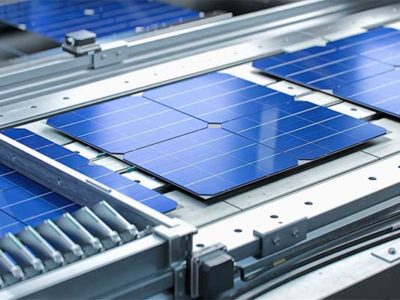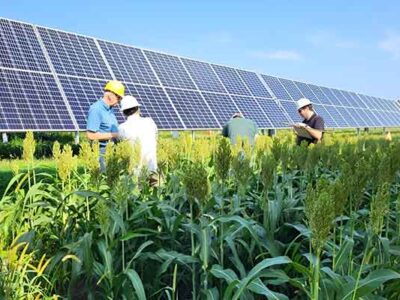In a paper published in Nature Energy, Dr Ross Hatton, Professor Richard Walton and colleagues, explain how solar cells could be produced with tin, making them more adaptable and simpler to produce than their current counterparts.
Solar cells based on a class of semiconductors known as lead perovskites are rapidly emerging as an efficient way to convert sunlight directly into electricity. However, the reliance on lead is a serious barrier to commercialisation, due to the well-known toxicity of lead.
Dr Ross Hatton and colleagues show that perovskites using tin in place of lead are much more stable than previously thought, and so could prove to be a viable alternative to lead perovskites for solar cells.
Lead-free cells could render solar power cheaper, safer and more commercially attractive — leading to it becoming a more prevalent source of energy in everyday life.
This could lead to a more widespread use of solar power, with potential uses in products such as laptop computers, mobile phones and cars.
The team have also shown how the device structure can be greatly simplified without compromising performance, which offers the important advantage of reduced fabrication cost.
Dr Hatton comments that there is an ever-pressing need to develop renewable sources of energy:
“It is hoped that this work will help to stimulate an intensive international research effort into lead-free perovskite solar cells, like that which has resulted in the astonishingly rapid advancement of lead perovskite solar cells.
“There is now an urgent need to tackle the threat of climate change resulting from humanity’s over reliance on fossil fuel, and the rapid development of new solar technologies must be part of the plan.”
Perovskite solar cells are lightweight and compatible with flexible substrates, so could be applied more widely than the rigid flat plate silicon solar cells that currently dominate the photovoltaics market, particularly in consumer electronics and transportation applications.
Reference(s):
Publication: K. P. Marshall, M. Walker, R. I. Walton, R. A. Hatton. Enhanced stability and efficiency in hole-transport-layer-free CsSnI3 perovskite photovoltaics. Nature Energy, 2016
Research story: University of Warwick | November 22, 2016 (source)

















Comments